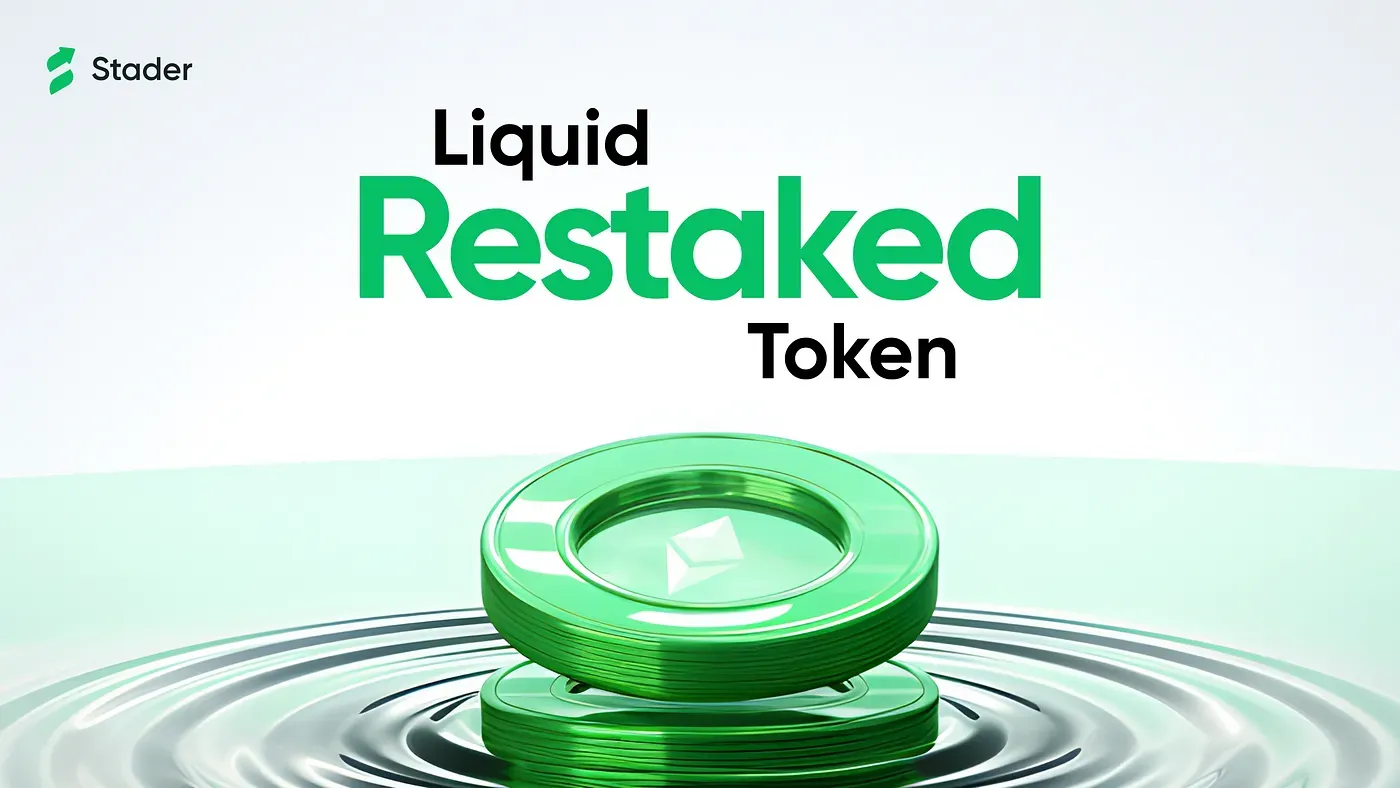Liquid Restaked Token | A new DeFi primitive
Stader is proud to present the next innovation in the staking landscape: Liquid Restaked Token (LRT).

Introduction
Today, liquid staking is the largest category by TVL in the crypto space. Since Ethereum transitioned to PoS and the Shapella upgrade enabling withdrawals, the LST ecosystem has expanded like never before. First off is the rise of the LSTfi narrative with new opportunities for holders of LSTs. Stader Labs’ newly launched Ethereum LST, ETHx, is designed to keep the network decentralized while making liquid staking more accessible, reliable and rewarding. Now, Stader is proud to present the next innovation in the staking landscape: Liquid Restaked Token (LRT).
What is Restaking?
Restaking is a process that allows users to stake their ETH and support validation on multiple networks simultaneously, including Ethereum and other protocols integrated with a restaking protocol. This approach utilizes Ethereum’s security layer to enhance capital efficiency throughout the crypto ecosystem, providing stakers with an opportunity to earn additional rewards for their validation services.
When it comes to restaking, a popular protocol is EigenLayer.
What is EigenLayer?
EigenLayer is a protocol built on Ethereum that introduces restaking, a new primitive in crypto-economic security. It lets stakers reuse their ETH on the consensus layer. Users who stake ETH directly on the beacon chain or with liquid staking tokens (LSTs) can opt-in to EigenLayer smart contracts to restake their ETH or LST, support the security of other applications on the network, and get extra compensation for doing so.
With EigenLayer, Ethereum stakers can help secure many services by restaking their staked ETH to specific node operators who, in turn, opt-in to provide economic security to multiple services simultaneously. With restaking, the same staked ETH helps secure more services and increases the rewards for the (delegated) stakers and node operators supporting validation.
Advantages & opportunities of restaking:
- Economic security for protocols: Bootstrapping economic security for a new blockchain or protocol is a hard task. EigenLayer makes it feasible for developers to bootstrap economic security for a fraction of the cost.
- Flexibility for protocols: Protocols can choose to focus on their application level choices and yet have complete control over the consensus and slashing conditions.
- Improved capital efficiency for stakers: Restaking allows stakers to earn rewards from validation activities supporting multiple services without tying up additional capital, improving their capital efficiency and rewards accrued in connection with validation services.
Potential challenges faced by restaking
Though restaking offers many opportunities, it also presents challenges that must be addressed effectively.
- Discovery for node operators: Each node operator can choose different services to run nodes. A restaker must spend significant effort and time understanding which Node Operators meet their risk profile. Over time, every Node Operator’s service profile can become non-fungible forcing restakers to reevaluate the actively validated services supported by their operators on a periodic basis.
- Complex reward structures: Each service can choose to reward restakers and node operators for their services in multiple denominations. Collecting, bookkeeping, autocompounding multiple tokens across many node operators with each token’s value trading at market prices is simply infeasible.
- High gas fees: The fees associated with claiming rewards from restaking and staking can have a significant impact on takeaways, especially for smaller investors.
- Liquidity constraints: When ETH is staked or re-staked, it becomes illiquid and cannot be easily used or traded until the unbonding period ends. This can be a significant drawback for immediate risk-offs.
- Opportunity cost: Users face the challenge of choosing between staking-and-restaking and DeFi opportunities. They need to assess the risk-reward ratios with limited information, which can be challenging.
Introducing LRT (Liquid Restaked Token):
To tackle these problems, the Liquid Restaked Token (LRT) is introduced as a potential solution. The new LRT token is a synthetic token issued for restaked ETH, ETHx or other LSTs. It not only solves the issues mentioned earlier but also allows for easy access to restaking and DeFi at the same time.
Here’s how it works:
- Restakers stake their ETH or liquid tokens to mint LRT tokens indicating fractional ownership of the underlying LRT assets.
- LRT contracts distribute the deposited tokens into different Node Operators that operate with the LRT DAO.
- Rewards continue accruing from the various services to the LRT contracts. The price of LRT token assumes the underlying price of the various rewards and staked tokens.
- Restakers can swap their LRT tokens for other tokens on AMMs or choose to redeem underlying assets through LRT contracts.
- Restakers can further leverage their LRT tokens’ composability in DeFi.
- LRT DAO will continue to monitor newer services to onboard and validators to be part of an operational set.
- Tokenomics will be a crucial part of how stake is allocated between different services.
The LRT DAO selects validators and services for restaking ETH, with potential future options for validators to join in a permissionless manner. A multi-pool architecture similar to ETHx can facilitate this process.
About ETHx
Ethereum needs a staking ecosystem that ensures a broader and healthier distribution of stake, reducing single points of failure and contributing to greater security for the network.
Powered by Stader Labs, ETHx is a liquid staking solution designed to keep Ethereum decentralized by being accessible, reliable and rewarding for stakers and node operators alike.
In order to ensure Ethereum validation remains scalable and resilient while being decentralized, ETHx features a multipool architecture.
- A permissionless pool allows anyone to run a node with just 4 ETH (+ 0.4 ETH worth of SD), significantly reducing capital barriers to node operations and bolstering decentralization
- A permissioned pool with a curated set of operators who have exhibited consistent performance supports scalability and complements permissionless nodes’ capacity
- A DVT (Distributed Validator Technology) pool increases validator resilience and lowers risks associated with permissionless node operations
- This modular multipool architecture supports the flexibility to incorporate additional pools in tandem with the evolution of the Ethereum staking ecosystem